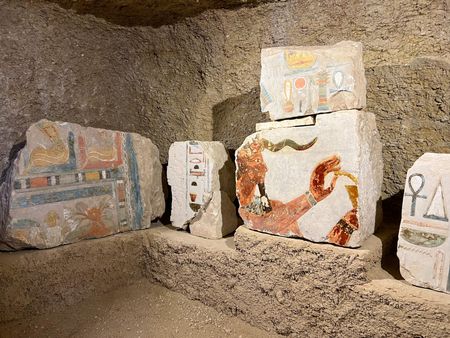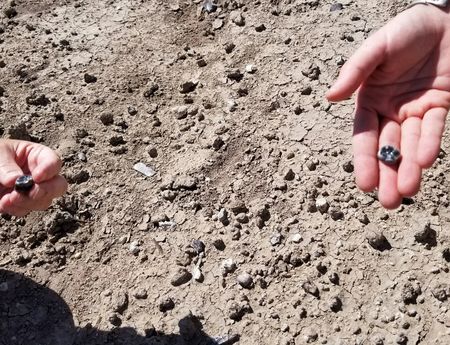CAIRO (Reuters) – Archaeologists have uncovered intact portions of the foundation wall of pharaonic Queen Hatshepsut’s valley temple in Luxor and the nearby tomb of Queen Teti Sheri, grandmother of Ahmose I, the first pharaoh of Egypt’s golden New Kingdom era.
The discovery of more than 1,000 decorated stone blocks on the outskirts of Hatshepsut’s funerary temple above was announced on Wednesday by team leader Zahi Hawass, an Egyptian archaeologist and former minister of antiquities who has been leading excavations at the site since 2022.
The 18th dynasty Queen Hatshepsut, who died in about 1458 B.C., was one of a small handful of women to have ruled Egypt. Her valley temple was intentionally demolished centuries later.
“This is the first time that we discovered, 1,500 decorated blocks, the most beautiful scenes I’ve ever seen in my life with the colour,” Hawass said.
A limestone tablet found at the site bore the name of Hatshepsut’s architect Senmut, who oversaw construction of the temple.
Queen Teti Sheri, whose tomb was found nearby, was grandmother of Ahmose I, who liberated Egypt from the Hyksos peoples who had invaded Egypt from across Sinai to the east. She died in the ninth year of Ahmose’s reign, a century before Hatshepsut’s.
The simple tomb was carved in rock and lay at the end of a mudbrick vaulted chapel with red wall drawings painted on a layer of white mortar.
(Reporting by Sayed Sheasha; Writing by Patrick Werr; Editing by Christina Fincher)
















